- Home
- Timothy Egan
Lasso the Wind: Away to the New West Page 2
Lasso the Wind: Away to the New West Read online
Page 2
Not all Westerners appreciate what they are entrusted with, but much of the rest of the world certainly does. I saw a map of the West published in the German-language edition of the magazine Geo. It was a contemporary map, but what it highlighted was the invisible empire of the past: the native tribes and their homelands, the wild animal herds and their long-ago range, the silent cities of the Anasazi. The map also showed wildlife refuges, national parks, and the blank spots protected as formal wilderness. It was everything the old world of Europe does not have—sections of public land bigger than some countries, and a past yet to be fully deciphered.
Think of what should never be taken away:
The light that enchanted D. H. Lawrence, who said New Mexico’s high country was “the greatest experience from the outside world that I ever had. It changed me forever.”
The canyonland arches, showing the age lines of many geologic eras; they convey a random sense of mischief, something that could collapse at any moment, or in another thousand years.
Joshua trees in the Mojave Desert, looking like discards from the sketchbook of Dr. Seuss.
North Cascade Mountain alpenglow, in July, when it is the most perfect place on earth.
Bristlecone pines wrapped in centuries-old embrace with a patch of rock.
College football in Missoula, under the big “M” on the mountainside, the Clark Fork rushing by.
Fish that don’t come from hatcheries, beasts that weren’t hatched in theme parks, and full-throated thunderstorms.
The shadow of the Front Range at dusk, stretching to the horizon of the Great Plains.
Above all, the big empty, where humans are insignificant, or at least allowed to think so.
Thrill to the names—El Dorado, Searchlight, Medicine Bow, Mesa Verde, Tombstone, Durango, Hole in the Wall, Lost Trail Pass, Nez Perce National Forest. Active names, implying that something consequential is going on: the Wind River Range, the Magic Valley, the River of No Return, the Painted Desert, Wolf Point, Paradise, Death Valley, the Crazy Mountains.
WE WENTback and forth on the aches that divide Westerners, talking into the evening. Then Terry Tempest Williams said something that has stayed with me. She traces her family lineage back five generations to Brigham Young’s day, when Mormons, like prickly pear cacti, were considered freaks of this land, something you could bring home to the geologic society in Boston and poke at under a harsh light. We sounded like her family at a recent reunion in Utah, she said. They fought, scrapped, and dodged. Her grandfather became upset at the bickering, finally brokering a temporary peace. He asked, What do we agree on? Two things: they all loved the land, but the old ways were not working anymore. Perhaps what the West needs, she said, is a grandfather—some grounding in a common story, not a mythic one, nor a plunderer’s tidied-up view.
Statues are scarce in the West, for good reason: sometimes, it takes longer for concrete to dry than it does for today’s consensus to become tomorrow’s historical heresy. It may be easier to lasso the wind than to find a sustaining story for the American West. Still, as storytellers it is our obligation to keep trying.
So I have tried to find a true West at the start of the next hundred years, leaving the boundaries of the old metaphors in search of something closer to the way we live. This West needs very little adornment, but it does need a grandfather. This West is still one of the wildest places on the planet. It is home to buried cultures as intriguing as the imagined West of pulp fiction. It is the foundation of societies sprouting overnight in settings where it was said people could never live, and cities making disastrous errors because they are misreading the land. It is where Clint Eastwood finally arrived at in his best Western, Unforgiven, a pig farmer under a hard sky, pouring rotgut liquor down his throat while he laments how awful it is to kill a man. And one day this West may no longer be boastful about its worst qualities, or afraid of its best.
CHAPTER 1
Custom and Culture
Catron County, New Mexico
Anasty little side war is raging in the high mountains where the Gila River forms out of snowmelt and springwater near the Mexico border. Some of the old Anglo boys are threatening Forest Service rangers, burning the United Nations flag, cranking out demands on county stationery. And no sir, they are not militia wackos or the kind of people who call talk-radio stations to complain about the computer chip planted in their buttocks. You can find plenty of them on the staffs of some Western congressmen. These are county officials running this particular skirmish, helped by a United States senator or two, who in turn are backed by some of the largest landowners in the West. At the center of it all are a kid and his wife trying to run cattle on nearly 150,000 acres in the wildest country in all New Mexico—and trying to do it without a cellular telephone, at that. They don’t own the land. But garrisoned on their own moral high ground, they swear that nobody is going to force them off.
I am in New Mexico less than a day, trying to track down the kid and the mythology that keeps him going. I feel underaccessorized—without boots, slab o’ belt buckle, or other essentials of regional camouflage. I usually travel with a fly rod and running shoes. Call me New West, but three generations of older West in my family brought me to this point of evolution. I’m tempted just to put a pinch of chaw between my cheek and gum and start bitching about the goddamn guvmint. But that would be a reach; for the most part, I like the Forest Service.
In looking for the last real cowboy in America, I first have to make it past all the fake ones. In New Mexico there are thickets of them, swarming around the turquoise galleries in the Plaza at Santa Fe, pushing Petroglyph Vu homes at the edge of thousand-year-old rock art panels in Albuquerque, sweating under heavy hats at the Cadillac lot. They have long had these drive-through liquor huts in the Land of Enchantment, vice booths where you can pick up a pint of Jack Daniels and a Penthouse to go without getting out of first gear. Some of the aggressive peddlers of cowboy culture go them one better. They deliver. You want a slice of vaquero life, a Lincoln County War video, or a hoof-’n-mane happy hour? Pick up the phone. Or wander into Albuquerque’s Old Town on any Saturday afternoon and you’ll see people shooting at each other and falling over dead, a group homicide staged by the New Mexico Gunfighters Association. “We do this to keep history alive,” a heavily armed woman explains.
Finding the kid on horseback is a bit more difficult. I look up my friend Frank Zoretich. He has a flashlight of a mind that he has put to good use wandering around New Mexico for the last decade or so. Frank knows the best place to sit atop the Sandia Mountains and watch the sun bleed out of the sky. He can tell you what Truth or Consequences used to be called before the town sold out its name to a game show. He can explain what it is about those twenty-seven radio telescopes pointed at the heavens on the Plains of San Agustin, and why the light and air of New Mexico make you feel like your best days are still ahead of you.
I told Frank I was looking to find the cowboy, fellow by the name of Kit Laney, holed up in the deep canyons of the southern Rockies, where the mountains start to dogleg off to the west toward the Sonoran Desert. Frank invites me to go look at some maps and sip tequila. He drives a van with better than 200,000 miles on it—original engine—and his front seat is crowded with motor oil, windshield wiper fluid, water bottles, spare food, and antifreeze. The lessons of the Donner Party were not lost on Frank.
As we head out at dusk on a winter night, it seems like a fog has settled in. “No fog,” Frank says. “Its a clear night.”
“But I can’t see anything.”
“Windshield. I gotta clean that thing.”
Frank is a ruminative road warrior, but instead of chewing while he thinks, he smokes. As a result, his windshield must hold a good eighth of an inch of nicotine from ten years of thinking-on-wheels. A long time ago, Frank left Seattle, where I first got to know him, and hit the road in his van. He was close to forty years old, despondent over a recent divorce, and had a little money saved. One day he steered h
imself out of the city and just kept going. His plan was to drive across the country, following whim, doing what most Americans ultimately feel they must do, which is to make some elemental connection to the big land. He sent back wonderful letters— funny and sharp and also personal. He didn’t glorify the road so much as he talked about what it was like to be surprised by the little quirks of the country. As the months went on, Frank’s money dwindled, and he became too familiar with the basement of loneliness. Still, he wanted to keep moving, and his friends wanted to keep receiving his letters. So he came up with the idea of publishing a newsletter, charging a nominal fee, that basically chronicled the life on the road of a forty-year-old guy, with submissions from his friends. His only compass was curiosity. He called his newsletter Friends of Frank, or FOF The motto was: “Always Something About Somebody You Know.” There were membership fees as well. Hundreds of people signed up. We received FOF quarterly, at best, but consumed it immediately. Alas, FOF kept Frank in gas-and-beer money but little else. After a few years, he pulled the van into Albuquerque and put FOF on a long hiatus.
He got hired at the Albuquerque Journal. After a stint doing the usual menial labor of covering car wrecks and incomprehensible public hearings, Frank convinced his editors to let him do what he does best—travel and write. He started a column, which later became a series of books and an organization—the Cheap Thrills Adventure Club—geared around the idea that there was a lot a person could do in New Mexico in a day without spending more than ten bucks or traveling further than 150 miles one-way.
Frank takes me to one of his favorite areas, a part of Albuquerque on old Route 66. On the outside, the strip looks as if it were frozen in the mid-1950s. There are Beaver Cleaver hardware stores, chili-dog and homemade-pie kind of cafes, and rows of little retail shops showing a face to the sidewalk of pre-espresso-age defiance. New Mexico has been a home to various people for at least eight thousand years; it has been nearly 500 years since the Spanish first planted a cross and flag on this land. And, yet, here is a little bit of 1950s America, unmarred, and it stands out like a medieval cathedral in a desert subdivision. This Route 66 strip, in fact, is on its way to historical preservation, protected by the U.S. government. My God, visitors may say in the future, there was a street in America without a warehouse store.
In the chill, we walk the strip and duck into a bar. It’s a Tuesday night, and the place is packed. We order tequila, with beer chasers. He smokes, and talks about his adopted home, the place where his van is likely to die. We both come from a part of the West where green is the dominant color and chlorophyll is an uncontrolled substance. In the Wet West, that strip from the Pacific shore to the Cascade Mountain crest, no square inch of soot in a sidewalk crack or roof is safe from an invasion of some fast-growing transplant. After settling down in New Mexico, Frank needed several years to get over “brownshock,” as he called it. I walk around as if in a planetarium, head spinning. The rusted tablelands, the baldness of the land, the mesas of potato-skin color. The wind announces itself in advance. My skin, used to the daily facial of Northwest drizzle, feels as if its been next to a radiator.
Frank has been following Kit Laney in the news, somewhat. Consequential stuff, political swindles, fraud, and epic land deals that will affect every American—these kinds of things have never held much interest for Frank. But ask him about the definition of sand—“chunks of mineral smaller than 1/25 of an inch in diameter but bigger than 1/400 of an inch; anything smaller is dust”—and his motor starts to run.
From what Frank could gather from his colleagues on the Journal, Laney was holed up in the heart of the Gila National Forest. We unfold the map and order some mescal, a smooth cactus-kicker. A few guys who look like they wouldn’t take to somebody who didn’t have much of a belt buckle are sitting nearby, but I feel no discomfort. In addition to being funny and observant, Frank is about six feet four inches tall and extremely scary-looking when he’s not laughing.
The Gila National Forest is in the deep southwest part of New Mexico, north of Deming, west of Truth or Consequences, south of Apache Creek. Its huge, more than 3.3 million acres, with peaks rising to eleven thousand feet. And it is the birthing ground for the river of the same name, the only reliable water that flows through much of the Southwest. The Continental Divide, the little black dotted line on any basic state map, splits the Gila forest.
Frank talks about all the cool stuff along the Rio Grande, east and west of the valley. Elephant Butte, which lives up to its name. The Bosque Del Apache, where snow geese and sandhill cranes crowd cornfields in the fall. The Ralph Edwards room in Truth or Consequences. But what about Catron County? And the little rebel town of Reserve? And a place called Old Horse Springs?
“Cant tell you anything about that stuff.”
“What?”
“Can’t help you. Except, you should watch for snow.”
“Frank? You’re supposed to be the living map of New Mexico.”
“Only part of New Mexico.”
He shows me a little map from his Cheap Thrills book, with the 150-mile radius from Albuquerque.
“I don’t know much outside the hundred-and-fifty-mile zone,” he says.
The Gila was well outside the radius. It was, to Frank, essentially foreign ground. After all his travels, he had settled on writing about a small piece of a big land. We finish our drinks and head outside. The air feels good, so dry and cold it’s like a chimney sweep on the lungs.
“Be curious,” he says. “Carry extra antifreeze.”
CLOUDS LIEatop the Plains of San Agustin, wet on dry, puffy on flat. There are no trees. No houses. The land feels uninsulated. I am the only person on the road at midday, just outside the border of Catron County. The Plains are a tilted table, pushed up close to a ragged sky. It starts to snow and I turn on my lights. I am a bit disoriented, traveling west and south, but it appears as if I’m heading into a distant galaxy, the stars of snow shooting by. Then something appears out of the oatmeal fog, distant rows of enormous blinking lights—the Very Large Array. They are metal blossoms, as Frank had described them, pointing skyward, each of them ninety-four feet high and eighty-four feet in diameter. It was the largest radio telescope in the world for a time, twenty-seven individual antennas probing the universe. Despite today’s weather, the sky is almost always clear on the Plains of San Agustin; the flat, featureless land was chosen as the ideal place from which to listen to the heavens. It looks alien and even a bit spooky. I do not see any evidence that human beings are tending these sentinels.
The Wacko West finds its affirmation in whispered bits of ignorance about such things as the Very Large Array. Consider the evidence: a row of radio telescopes; stealth bombers swooping over the Mojave Desert, coming and going with the quickness of hummingbirds; Fish and Wildlife agents TALKING IN SOME KINDA CODE ON THE SAME RADIO FREQUENCY in Idaho; the hardy perennial about the coverup of a UFO landing in Roswell, New Mexico. Its a Wacko West feast. Dot-to-dot-to-dor. Throw in a few grainy photographs of ordnance moving on train tracks. And hey, what about those German troops training on an old New Mexico army base? None of this would mean anything in a crowded space. But in open land it’s another story. In truth, the Very Large Array is but a technical expression of human curiosity. Its unarmed appendages do nothing but blink and probe. Who’s out there? Anybody home in the rest of the universe? Tell us something. It looks outward, trying to discern something among the stars, sixty sextillion miles away.
I chug up to the Continental Divide, leaving the fog behind on the Plains of San Agustin, in the drainage that flows to the Atlantic. I pause at a round-up site, one of the biggest of the West’s old hoof highways. From 1885 to 1975, great crowds of mobile lamb chops, T-bone steaks, and future hamburgers passed through here, sometimes 150,000 cattle and twenty thousand sheep at a time. The livestock swarm made ten miles a day, mowing down every twig of life. It was the day of chuck wagons and butt calluses, frijoles, and a whiskey known as coffin varnish.
<
br /> Downslope, in the Pacific drainage, where all the water is pulled into the San Francisco River, the land changes color. There are hints of green and pockets of bluish juniper trees in the mountain draws, and then a few big ponderosa pines—the fabled yellow-bellies. Some signs of human habitation appear, windmills pumping groundwater for cattle and cowboys, a few dying ranches, siding cracked by the dry air. Reserve, population 900, is the Catron County county seat; more than a mile high, it is a town under a siege of its own making. On many poles, the American flag is flying upside down. The last Catron County timber mill is deserted, its industrial carcass picked dry by thieves. There are two main streets in town, a bar, a handful of hunters’ motels with dried blood on the carpets, a couple of restaurants, a county building. The whole thing has a haunt and stench to it.
In contrast to the Very Large Array, Catron County seems afraid of the rest of the world, the rest of the country, even the rest of the state of New Mexico. The county is bigger than half a dozen eastern states, and it holds barely three thousand people inside its boundaries. Big space, few people— sometimes that is an incentive for flights of daring that would be unheard of in a crowded city; more often in the human landscape of the West, it’s a recipe for the worst kind of rural gossip. Talk radio, the great lubricant of lunacy theories right and left, recently aired the ramblings of a man who claimed that five thousand National Guardsmen had invaded Catron County. A call to arms went out, and some county leaders went into hiding in “safe” houses. Not long after that, a wildlife biologist, Tim Tibbitts, pulled into Reserve with an appointment to chat with a rancher about how to work with the many endangered species of the county. A red-faced man ripped open his car door and started barking at the biologist. “If you ever come back to Catron County,” he said, “we’ll blow your fucking head off.” Imagine if someone wanted to talk about something other than a subspecies of the black-tailed prairie dog.

 The Immortal Irishman
The Immortal Irishman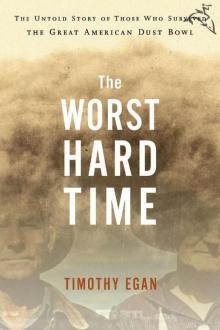 The Worst Hard Time: The Untold Story of Those Who Survived the Great American Dust Bowl
The Worst Hard Time: The Untold Story of Those Who Survived the Great American Dust Bowl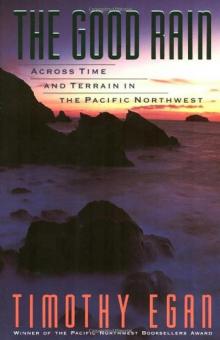 The Good Rain: Across Time & Terrain in the Pacific Northwest
The Good Rain: Across Time & Terrain in the Pacific Northwest Breaking Blue
Breaking Blue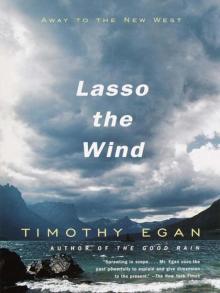 Lasso the Wind: Away to the New West
Lasso the Wind: Away to the New West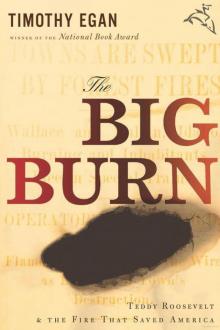 The Big Burn: Teddy Roosevelt and the Fire That Saved America
The Big Burn: Teddy Roosevelt and the Fire That Saved America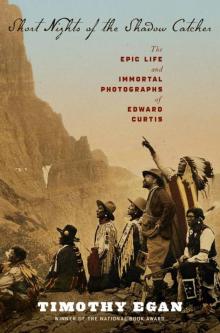 Short Nights of the Shadow Catcher
Short Nights of the Shadow Catcher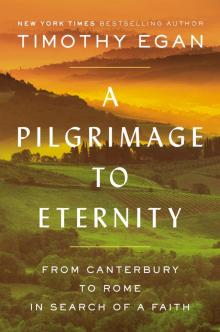 A Pilgrimage to Eternity
A Pilgrimage to Eternity The Worst Hard Time
The Worst Hard Time The Big Burn
The Big Burn